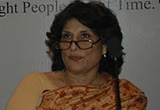 Agriculture is intrinsic to nutrition. It is like stating the obvious—and no formal education or training is required to see the linkage. But the simplicity ends here. While “agriculture” is universally understood by everyone, “nutrition,” and “malnutrition,” are not that clearly understood by many, including the well informed.
Agriculture is intrinsic to nutrition. It is like stating the obvious—and no formal education or training is required to see the linkage. But the simplicity ends here. While “agriculture” is universally understood by everyone, “nutrition,” and “malnutrition,” are not that clearly understood by many, including the well informed.
The subject might provide a feast for researchers, who seek new pathways and nuances, and load on other current subjects that rule international thinktanks, through further linkages, natural or forced. But the real test of the linkage at the homestead level is tough.
The easiest part of establishing the linkage is at policy level, where its only test is that of logic and coherence, evidence, or recommendation from a reputed research institution, and contribution to public good. Policy is generally exempt from field testing or other reality checks. Instead, it enjoys all the privileges of a “conceptual” umbrella under which everyone connected is told what’s good to do and why.
Thereafter, as it travels down from the policy level to the household and the farm (where the linkage finally has to prove itself), its logic diversifies into multiple pathways, many quite contradictory to each other, for example:
1. Agriculture policy aims at higher productivity, yield, acreage, and greater profits for farmers. Public health and nutrition seek the same, but with affordable prices for the consumer. The result is that public good would expect a state intervention through food subsidy.
2. Agriculture is a private enterprise, for income and profit, or subsistence, dependent on the size of the land holding, irrigation, and rainfall. The government may advise, but it cannot dictate to the farmer about what he must grow. A farmer will grow what brings him most profit, or easy and assured sale, and not what is most nutritious for himself or the community. But while food consumption and nutrition is a private affair, the collective nutritional wellbeing of the population is a public issue and the responsibility of the government, particularly if the nutritional status of a large percentage of the people is below accepted norms. Public good then demands that the state must intervene in the most appropriate manner.
3. The points at which agriculture and nutrition intersect in the production/consumption linkage, if they do at all, vary within a society, more so in India, where agricultural practices range from the most modern to peasant agriculture. Urban populations obviously cannot grow what they eat or eat what they grow, except through the odd kitchen garden or fruit trees. Rural agricultural populations in India can be divided into large farmers who grow crops that are likely to fetch them most profit, and who probably have good nutritional status; small and marginal farmers who have little rain-fed land, through which they can produce all or a portion of their staples requirement for the year; and landless agriculture labourers who either buy staples from the market or get them in lieu of wages. It is the last two groups that are most affected by under-nutrition and micronutrient deficiency.
Evidence from the field indicates that crop patterns are determined by large farmers who grow what is most profitable. Small and marginal farmers generally follow suit, because seeds and other agricultural inputs become more easily available. Nowhere is the agriculture nutrition linkage visible, nor is it uppermost on the farmer or the government’s mind.
Veena S Rao is adviser, Karnataka Nutrition Mission.
I declare that that I have read and understood the BMJ Group policy on declaration of interests and I hereby declare the following interests: Adviser, Britannia Nutrition Foundation.